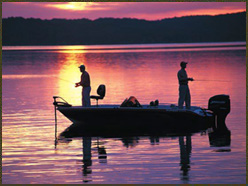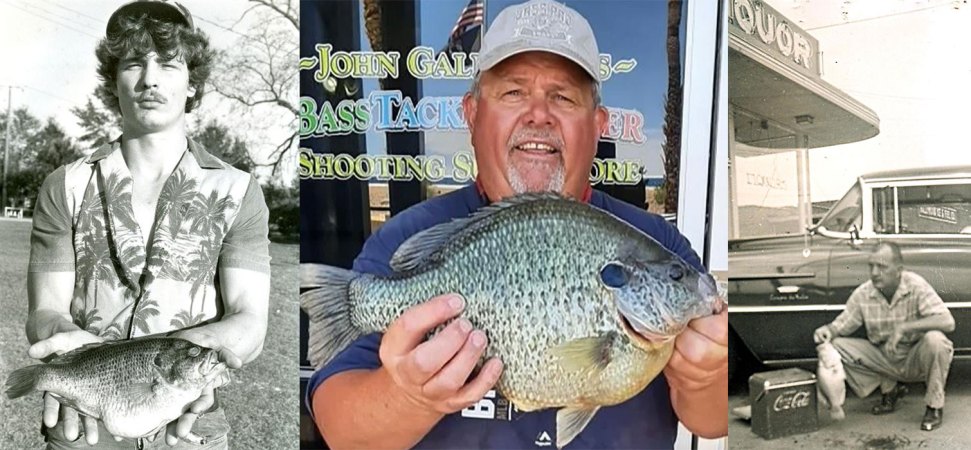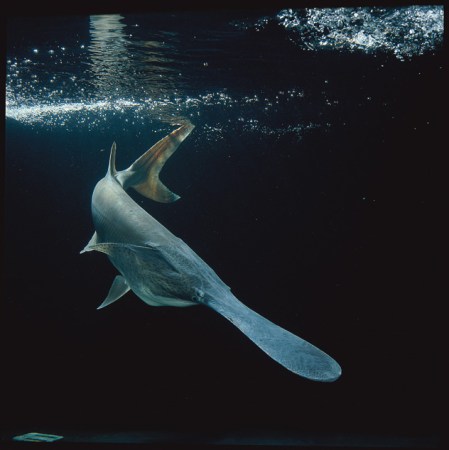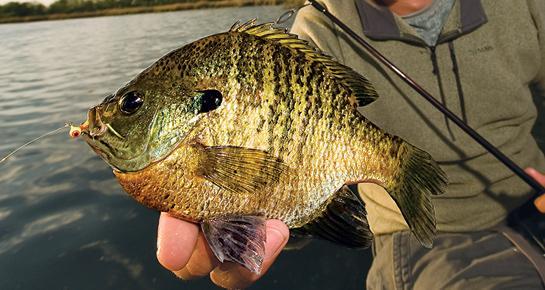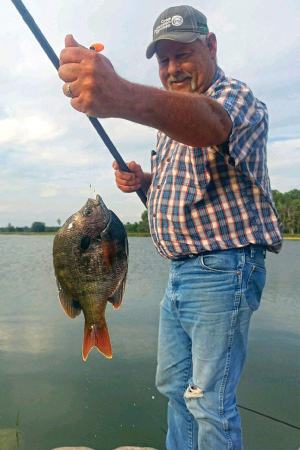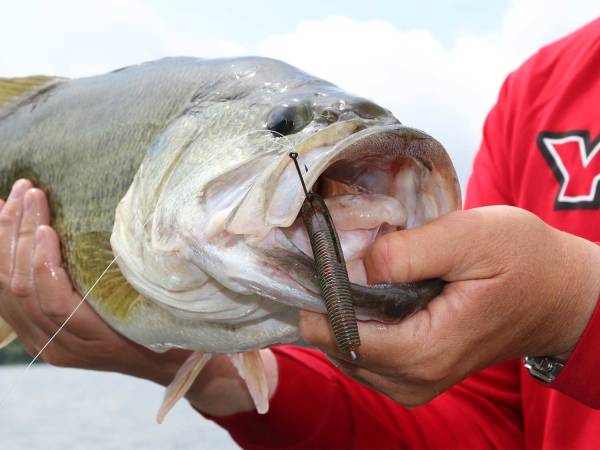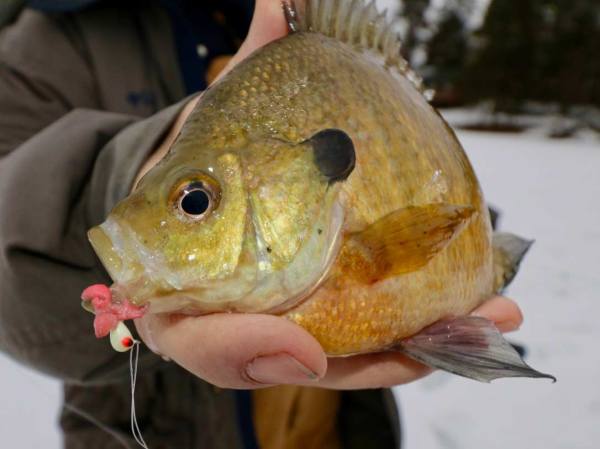For millions of anglers, the word “bream” conjures up special memories. Many recall childhood fishing trips with friends or relatives, dunking worms in a pond or creek and thrilling to the pulse of a scrappy sunfish at the end of the line. Some anglers recollect blooming dogwoods and big redears pulled one after another from a flooded brush pile or weed bed. Others think back to frosty winter days and icefishing for bluegills, or a midsummer morning spent floating a scenic stream for redbreasts, or that Indian summer afternoon when the “sunnies” inhaled every fly or popper that was cast their way.
We love bream for many reasons. Members of this broad family of bantam panfish fight like blue blazes for their size and they’re tops on the dinner table. They swim in nearly every lake, river, creek and pond in the country. When we want to catch lots of fish, regardless of size, bream answer the call, because nowhere in the continental U.S. are we more than a short drive away from a body of water well populated with one subspecies or another.
Fishing for bream, or sunfish, as they’re also generally known, is a great way to introduce youngsters to fishing. Don’t fall for the elitists’ line that these panfish are just “kids’ fish,” however. Catching them is a wonderful pastime everybody can enjoy. No need for fancy boats. Forget the power-buster rods, pricey reels and suitcase-size tackle boxes full of expensive lures.
Worms, crickets and tiny lures are the blue-plate specials for bream. Cane poles, cut-rate rods and reels and paint-bare johnboats can replace the snazzy gear. Glamorous? Hardly. But sunfishing provides a great alternative to “serious” fishing, with its multitudinous gadgets, endless problems and wearisome technicalities. If you’ll let them, bream can lead you back to what fishing is supposed to be in the first place-plain, relaxing and fun. Consider the possibilities.
Bluegills
The prolific, pugnacious bluegill originally swam only in eastern U.S. waters, but stocking expanded its range to every state except Alaska. Bluegills are now the most widespread, abundant and popular of the sunfish family. Folks know them by many names: coppernose bream, perch, copperhead, dollardee and blue joe, among others.
Bluegills love company, usually consorting in loose schools of 20 to 30 individuals. They inhabit ponds, lakes, sloughs and all sorts of running water, from small streams to large rivers. A population of adult fish in habitat conducive to good growth usually has many 6- to 8-inch fish weighing 4 to 8 ounces apiece, with a smattering of 10- to 12-inch individuals weighing a pound or more. They grow as much in girth as they do in length.
Real heavyweights resemble (in size and shape) the dinner plates they frequently end up on. The world record, caught in 1950 in Alabama’s Ketona Lake, weighed 4 pounds, 12 ounces, was 15 inches long and had a girth of 18.25 inches.
Redear Sunfish
If bream were placed in divisions like boxers, redears would be heavyweight contenders. These hard-hitting panfish deliver a knockout punch that will put your bobber down for the 10 count.
The “redear” name derives from the fish’s crimson-tipped gill flaps. Redears also have grinding teeth in their throats for crunching the shells of tiny mollusks. For this reason, they’re often dubbed “shellcrackers.” Other monikers include government-improved bream, redear perch, yellow bream, chinquapin and cherry gill.
Size makes redears particularly attractive. Some Southern lakes frequently produce 11/2- to 2-pounders. Redears over three pounds have been recorded in Arizona, Delaware, Kentucky, Mississippi, Ohio, South Carolina and Tennessee. Anglers in Alabama, Florida, Georgia, North Carolina and Virginia have caught redears topping four pounds. Two states-California and South Carolina-have records over five pounds. The rld record from the Santee Cooper Diversion Canal in South Carolina weighed an astounding 5 pounds, 7.5 ounces.
Though native to the southeastern U.S., redears also thrive in many areas where introduced, including most of Pennsylvania, Ohio and Indiana and California, Nevada, Arizona, New Mexico and Wyoming. They live and feed near the bottom and prefer deeper water than most other bream. Many are caught around stumps, logs, standing timber and aquatic vegetation.
Warmouths
One is tempted to suspect that these sunfish have a touch of bass in them. Although fairly diminutive in size (the world record, caught in Florida, weighed 2 pounds, 7 ounces), these guys have fairly oversize mouths and aggressiveness to match. Bass anglers commonly catch warmouths with their lures. Although warmouths feed on a variety of insects, they relish minnows and often are caught on crappie rigs.
The warmouth is a handsome fish with a chunky body that is rounder than a bluegill’s. Its red eyes are a distinguishing feature, but head and body colors vary depending on water clarity and region. Streaks of faint red or purple may radiate from its cheeks back to the black tip of its gill flap. The body may also be streaked or barred with colors over a copperish undercoat.
Regardless of its color, the warmouth is a fish to be held up and admired in the sunlight of a spring day. Warmouths are ubiquitous in waters of the South and many of the Midwestern and Atlantic Coast states as well. Their aliases include goggle-eye, redeye perch and goggle-eyed perch. Look for them in the shallows of farm ponds, backwater sloughs and the quiet coves of lakes. They have a fondness for woody shoreline cover surrounded by aquatic vegetation.
Redbreast Sunfish
Redbreast sunfish haven’t earned as much press as their larger cousins, but these bream fight tenaciously and are held in high esteem in areas where they’re common. In prime waters, they often weigh a half-pound or so. Most large specimens are caught in the Southeast, from the Carolinas down into Florida. The all-tackle world record-a whopper at 2 pounds, 1 ounce-was taken from Florida’s Suwannee River. A bright splash of color across the breast and belly gives this panfish its name. However, a redbreast’s breast isn’t always red. It may be vivid yellow or rust-colored. Common regional names include yellowbelly, yellowbreast, robin, red perch, tobacco box and longear.
Redbreasts inhabit diverse waters, everything from cold mountain streams to warm lakes and ponds and brackish coastal marshes, but anglers must be selective about fishing spots. Certain waters have many redbreasts, while similar waters nearby may have none. The best waters tend to be midsize streams where redbreasts grub on bottom for snails, crayfish, insects and insect larvae.
Longear Sunfish
This beautiful, feisty panfish is emblazoned with a rainbow of colors-aquamarine back and sides with gold and emerald speckles, a face of green or tangerine, a lemon-yellow to orange belly and opalescent veins of turquoise striping the cheeks, nose and gill covers.
Colloquial names include perch, cherry bream, pumpkinseed, redeye sunfish and tobacco box. These little guys, which average three to five ounces as adults, inhabit rivers and streams, creeks, oxbow lakes, delta rivers, bayous and other small waters.
Longears feed mainly on insects and small fish, which is why tiny lures such as jigs, spinners and crankbaits are used to catch them.
Green Sunfish
No panfish is more abundant or adaptable than the green sunfish. This pioneering species readily populates new bodies of water and those affected by drought. No creek is too small for it, no river too large. Turn its stream into a lake or pond and the green sunfish will stick around and do just fine, thank you. If a body of water is even remotely capable of supporting life, the green sunfish is probably there.
Depending on where it’s encountered, the green sunfish is also called black perch, shade perch, blue-spotted sunfish, rice-field slick and rubbertail.
Adults can grow 8 to 10 inches long and weigh about 1 pound, but the average is 4 to 8 ounces.
These guys will eat anything they can get in their mouths, including baitfish, and can be caught on a variety of flies and small bass plugs.
Pumpkinseed
The pumpkinseed, one of panfishing’s favorites, is usually encountered along the shorelines of ponds and streams. It is strikingly beautiful, displaying silvery green sides with reddish flecks and iridescent blue and emerald reflections. The underside is gold to orange-red. Streaks of aqua radiate from the nose back across the face.
Common sunfish, yellowbelly, round sunfish, roach or quiver-by whatever name, the pumpkinseed is a good-looking charmer.
Though thick and chunky, most pumpkinseeds are smaller than bluegills; a half-pounder is a true whopper. Like other members of the sunfish family, they are fairly abundant in the warm-water regions of the country, most particularly the lower Midwest and upper South.
Worms, insect larvae, small leeches, crickets, tiny jigs, wet flies and other miniature artificials will catch them.
**Tackle Tips **
Any fishing tackle can be used for bream, but experienced bream fishermen usually employ the lightest practical equipment. Using fine line, inconspicuous terminal rigs and small baits or lures helps overcome the wary nature of large specimens. Light or ultralight rods or poles compound the excitement of playing these scrappy fish.
Most anglers opt for an ultralight spinning or spin-cast combo, a cane pole or a long jigging pole rigged with 2- to 8-pound-test line. A few bobbers and floats, small hooks, split shot and a couple of lures round out the selection. Flyfishing tackle works great.
Even a big sunfish has a mouth that’s relatively small. Anglers should use baits and lures similar in size and appearance to such foods as small insects and minnows.
Where to Catch ‘Em
Bream feed at all levels, grubbing on the bottom, picking food from aquatic vegetation at mid-depths and taking insects on the surface. They might be buried in dense cover or in relatively open water. They might bite only around dawn and dusk, or feed heavily on a warm summer night.
Fortunately, if you do your fish finding systematically, you shouldn’t have trouble determining where or how to fish, even when visiting new waters.
First, remember that sunfish are cover lovers. They rarely venture far from areas that provide protection from predators, a ready food supply and shelter from intense sunliater is even remotely capable of supporting life, the green sunfish is probably there.
Depending on where it’s encountered, the green sunfish is also called black perch, shade perch, blue-spotted sunfish, rice-field slick and rubbertail.
Adults can grow 8 to 10 inches long and weigh about 1 pound, but the average is 4 to 8 ounces.
These guys will eat anything they can get in their mouths, including baitfish, and can be caught on a variety of flies and small bass plugs.
Pumpkinseed
The pumpkinseed, one of panfishing’s favorites, is usually encountered along the shorelines of ponds and streams. It is strikingly beautiful, displaying silvery green sides with reddish flecks and iridescent blue and emerald reflections. The underside is gold to orange-red. Streaks of aqua radiate from the nose back across the face.
Common sunfish, yellowbelly, round sunfish, roach or quiver-by whatever name, the pumpkinseed is a good-looking charmer.
Though thick and chunky, most pumpkinseeds are smaller than bluegills; a half-pounder is a true whopper. Like other members of the sunfish family, they are fairly abundant in the warm-water regions of the country, most particularly the lower Midwest and upper South.
Worms, insect larvae, small leeches, crickets, tiny jigs, wet flies and other miniature artificials will catch them.
**Tackle Tips **
Any fishing tackle can be used for bream, but experienced bream fishermen usually employ the lightest practical equipment. Using fine line, inconspicuous terminal rigs and small baits or lures helps overcome the wary nature of large specimens. Light or ultralight rods or poles compound the excitement of playing these scrappy fish.
Most anglers opt for an ultralight spinning or spin-cast combo, a cane pole or a long jigging pole rigged with 2- to 8-pound-test line. A few bobbers and floats, small hooks, split shot and a couple of lures round out the selection. Flyfishing tackle works great.
Even a big sunfish has a mouth that’s relatively small. Anglers should use baits and lures similar in size and appearance to such foods as small insects and minnows.
Where to Catch ‘Em
Bream feed at all levels, grubbing on the bottom, picking food from aquatic vegetation at mid-depths and taking insects on the surface. They might be buried in dense cover or in relatively open water. They might bite only around dawn and dusk, or feed heavily on a warm summer night.
Fortunately, if you do your fish finding systematically, you shouldn’t have trouble determining where or how to fish, even when visiting new waters.
First, remember that sunfish are cover lovers. They rarely venture far from areas that provide protection from predators, a ready food supply and shelter from intense sunli
